Content |
|---|
Characteristics "Tibetan Mastiff (Do-Khy)"
Coexistence is important that you have with your new friend. Before considering the acquisition of a dog of the breed "Tibetan Mastiff (Do-Khy)" you know certain factors. Not all breeds of dogs are apt to live in an apartment, you must take into account his character, their need for exercise, their interaction with other pets, their care and if you have small children, their level of tolerance towards them.
Adaptation ⓘ3.0 out of 5 stars (based on 1 review)
|
friendly dog ⓘ2.0 out of 5 stars (based on 1 review)
|
hair loss ⓘ4.0 out of 5 stars (based on 1 review)
|
|---|---|---|
Affection level ⓘ3.0 out of 5 stars (based on 1 review)
|
Need for exercise ⓘ3.0 out of 5 stars (based on 1 review)
|
Social need ⓘ3.0 out of 5 stars (based on 1 review)
|
Home ⓘ1.0 out of 5 stars (based on 1 review)
|
Toilet ⓘ4.0 out of 5 stars (based on 1 review)
|
Friendly with strangers ⓘ1.0 out of 5 stars (based on 1 review)
|
barking ⓘ5.0 out of 5 stars (based on 1 review)
|
Health ⓘ2.0 out of 5 stars (based on 1 review)
|
Territorial ⓘ5.0 out of 5 stars (based on 1 review)
|
Cat friendly ⓘ3.0 out of 5 stars (based on 1 review)
|
Intelligence ⓘ3.0 out of 5 stars (based on 1 review)
|
Versatility ⓘ3.0 out of 5 stars (based on 1 review)
|
Child friendly ⓘ3.0 out of 5 stars (based on 1 review)
|
Surveillance ⓘ3.0 out of 5 stars (based on 1 review)
|
joy ⓘ5.0 out of 5 stars (based on 1 review)
|
History of “Tibetan Mastiff”
The Tibetan Mastiff o Doge of Tibet (Do-Khy), is a dog native to Tibet, It appeared to the year 8000 to. C.
The “Mastin Tibetano” It is an ancient race of work of the pastoralists of the Himalayas and a traditional guardian of Tibetan monasteries. Its history has been surrounded by great mysticism since it was discovered in ancient times.. Since its mention by Aristotle (384 – 322 to. C.) at the famous writings of Marco Polo, who went to Asia in 1271, all historical reports praise the natural strength and grandeur of the Doge of Tibet, both physically and mentally.
Until his barking It has been described as unique and as a characteristic of the highly treasured breed.
The outstanding European cinófilos of the past like Martin and Youatt, Megnin, Beckmann, Siber as well as Strebel, Bylandt have intensively investigated the Tibetan Mastiff, being fascinated with their origin and role in the Tibetan culture.
One of the first Tibetan doges to reach the western shores was a male specimen sent to Queen Victoria by Lord Hardinge. (at that time viceroy of the India) in 1847. Later in 1880 Edward VII (then Prince of Wales), took 2 dogs return to England. One of the earliest records of litter of Doges Tibetans was in 1898, born in the Berlin Zoo.
Considered as the race led all large mountain races and all mastiffs.
According to testimonies dating back to 2.000 years before Christ, the Tibetan Mastiff was used by the Assyrians as a war dog and for the custody of prisoners..
It still appears with the same appearance as in the Babylonian bas-reliefs, Egyptians and Greeks, showing in this way the great diffusion in very ancient times.
The Roman conquests and invasions of Asian peoples, It spread quickly to the basin of the Mediterranean giving rise to all the races of molossians Europeans, many of pastor and other rescue as the St. Bernard, the Newfoundland and the Pyrenean Mountain Dog.
Characteristics Tibetan Mastiff
Videos "Tibetan Mastiff (Do-Khy)" |
||
|---|---|---|
It is a companion dog, Guard and protection; slow to mature, females only reach their apogee between 2 and 3 years and males at least the 4 years.
It is a dog powerful, heavy, good bone structure. Impressive, solemn but kindly appearance.
They have the feet quite large, strong and compact. They have the shape of the feet of cat with long hair between the toes. Its walk is strong, free, always light and elastic. In fast walks it tends to bring the members closer in a medium line. When walking, It seems slow and careful.
Males have, notably, more hair than females. The quality of the hair is of greater importance than quantity. Primarily the hair should be fairly long and dense.
When the weather is cold it should have a layer of hairs, internal and thick that becomes sparse in the hot months.
The hair is fine but hard, straight and roughness. Never silky, curly or wavy. The hair of the inner layer, When it has, is quite woolly. The neck and shoulders are covered with hair giving the appearance of a mane. The tail is covered with dense and bushy hair. The upper rear of the hindlimbs is pretty long hair forms fringes.
They are of color intense Black, black and tan, brown, various shades of gold, grey and blue; grey and blue and fire. The fire color varies from a very intense hue to lighter colors.
It allows a White Star on the chest. Minimal white spots are acceptable on the feet. Heat stains appear on the eyes, in the lower extremities, on the underside of the tail, around the snout, and in the form of sunglasses around the eyes.
Character “Tibetan Mastiff”
Respect to temperament, the race many experts agree that is a dog difficult in nature or complex..., is distant, and too independent to the point of being unpredictable because rarely leaves knowing their true intentions.
The Tibetan Mastiff It is a very brave dog that not afraid of anything, and that makes it in a excellent guardian.
His family is very love and abiding, but it is completely distrustful to strangers, and that can lead it to bite a stranger, for that reason it is not usually a dog suitable for novices... Since, If do not have education and training appropriate and responsible, It can be a real danger.
By that peculiar and especially unpredictable nature, race scholars pose that not is a dog ideal to live with children.
It is one of the oldest breeds of origin and is still used today in the Himalayan chain for the custody of herds and as a guardian of monasteries..
In the discharge of this function is safe and incorruptible, fierce and dangerous with strangers, as almost all races that can be defined as “old” and whose character has been forged in the course of the centuries.
It has little spread outside of Asia, even in the world of the cinophilia, It is little frequent to see copies of this race to participate in international dog shows.
Observations
Even in Tibet it is on the verge of extinction due to the difficulties involved in raising dogs of that size..
The price of a Mastin Tibetano currently ranges between 1500 and 2000 EUR, a few 1700 and 2400 $.
In the news, the breeding of the Tibetan Mastiff develops almost exclusively in England.
Health “Tibetan Mastiff”
The Tibetan Mastiff have some health conditions that may be worrisome. These include hip and elbow dysplasia, hypothyroidism, the persistence of the pupillary membranes (an eye disorder) and demyelinating neuropathy inherited from canines.
Not all of these diseases are detectable in a growing puppy, and it can be difficult to predict whether an animal will be free of these ailments., so you should find a trusted breeder who is committed to raising the healthiest animals possible. Must be able to produce an independent certification that the parents of the dog (and grandparents, etc.) have been screened for these defects and considered healthy for breeding. That's where health records come in..
Careful breeders screen their breeding dogs for genetic diseases and breed only the healthiest, best-looking specimens., but sometimes Mother Nature has other ideas and a puppy develops one of these diseases despite good husbandry practices. Advances in veterinary medicine mean that in most cases the dog can still live a good life.. If you are going to have a puppy, ask the breeder about the ages of the dogs in your line and the cause of death.
Keep in mind that Tibetan Mastiffs mature very slowly. They will not reach their full size until they have 3 to 5 years of age.
Remember that after bringing a new puppy home, has the power to protect you from one of the most common health problems: the obesity. Keeping a Tibetan mastiff at an appropriate weight is one of the easiest ways to prolong its life. Make the most of your preventive skills to help ensure a healthier dog for life.
The toilet “Tibetan Mastiff”
The Tibetan Mastiff has a long, thick double coat, with males having more luxurious coverage than females. The heavy undercoat is soft and woolly; the top layer is straight with a hard texture. The amount of hair on the neck and shoulders gives the Tibetan Mastiff the appearance of having a mane. Its tail and “britches” (the rear thighs) they are also heavily covered. There is no need to trim any part of the coat unless you want to give your feet a cleaner look. With regular brushing, should not need frequent baths.
Brush to Tibetan Mastiff several times a week to remove dead hair and maintain healthy skin and coat. During the molting season, you'll want to brush it daily to keep your hair down under control.
The rest is basic care. Trim nails as needed, usually every week or two. Brush your teeth frequently with a veterinarian-approved pet toothpaste for overall good health and fresh breath.
Images “Tibetan Mastiff”
Videos “Tibetan Mastiff”
Type and recognitions:
- FCI CLASSIFICATION: 230
- Group 2: Pinscher and Schnauzer - Molossoid and Swiss Mountain and Cattledogs
- Section 2.2: Molossoid, mountain type. Without working trial..
Federations:
FCI ⓘ, AKC ⓘ, ANKC ⓘ, CKC ⓘ, KC ⓘ, NZKC ⓘ, UKC ⓘ
FCI breed standard "Tibetan Mastiff (Do-Khy)"
Alternative names:
1. Mastiff (English).
2. Mastiff du Tibet (French).
3. Tibetdogge, Tibetanische Dogge, Tibetmastiff (German).
4. Mastiff tibetano (Portuguese).
5. Dogo del Tíbet (español).
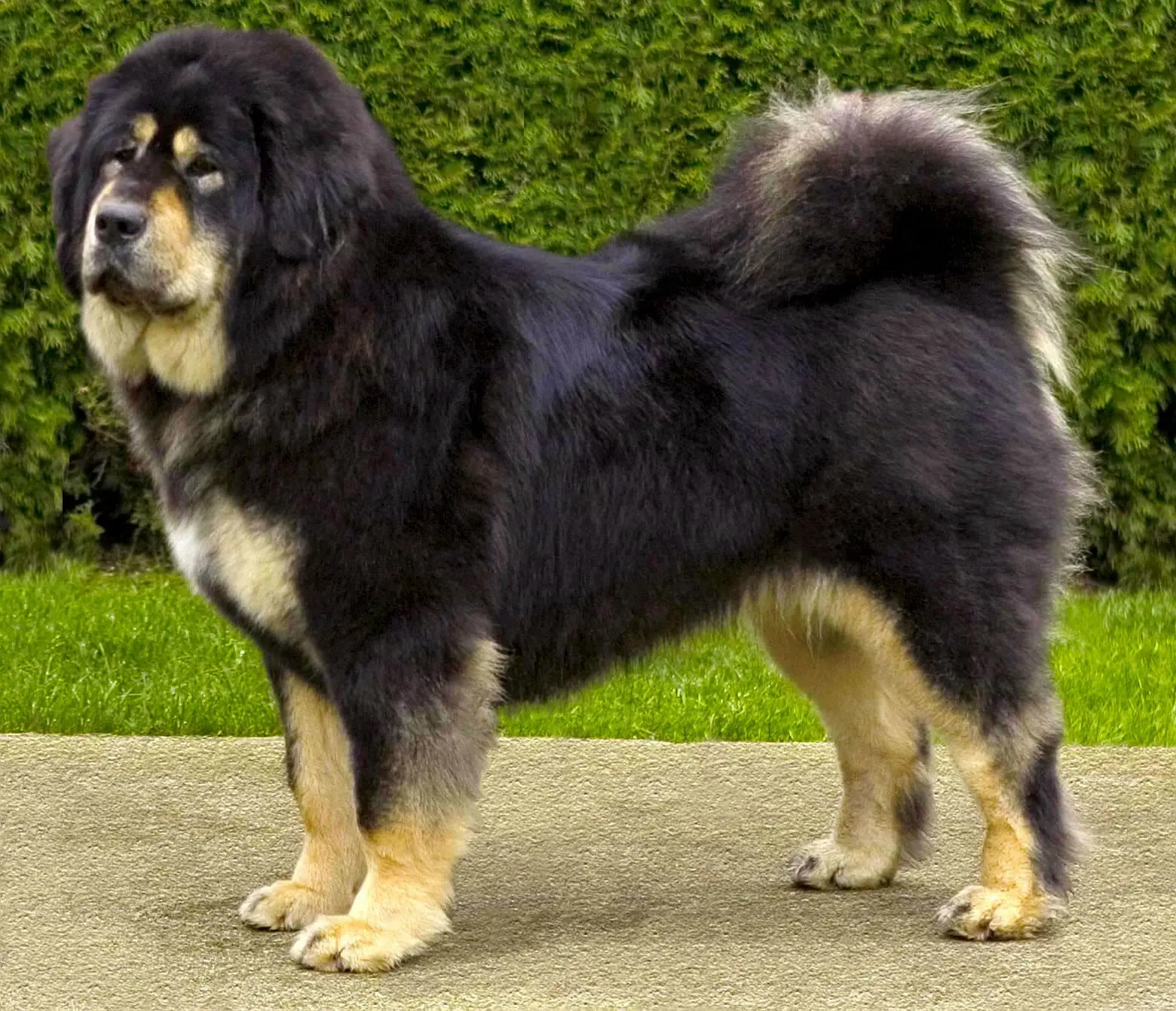

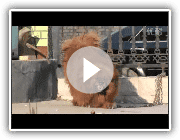
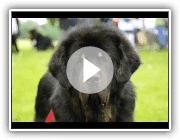
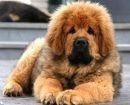
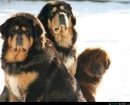
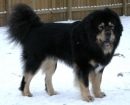
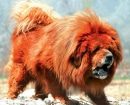
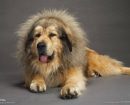
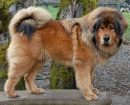
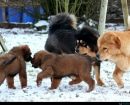
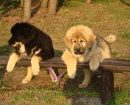
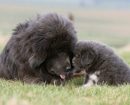
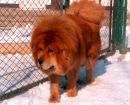
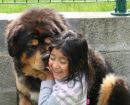
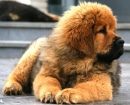
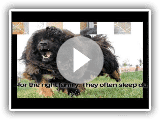 Tibetan Mastiff
Tibetan Mastiff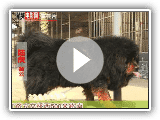 ZANGAO
ZANGAO “Alaskan Malamute puppy playing with Tibetan Mastiffs”
“Alaskan Malamute puppy playing with Tibetan Mastiffs”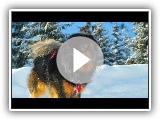 Do Khyi – Best of Breed – Senge – Ostern 2010
Do Khyi – Best of Breed – Senge – Ostern 2010
Visitor Rating: 5 Stars
Good morning, I am writing to you.. since I am interested in contacting someone responsible for this website to make a consultation.
Every dog ​​can be with children.
But if educating since childhood can be with children